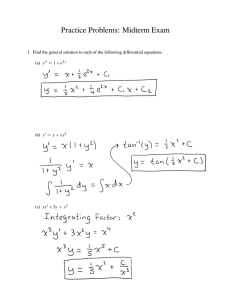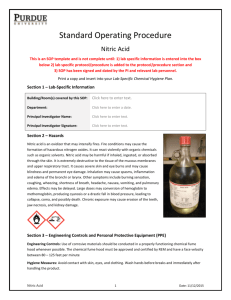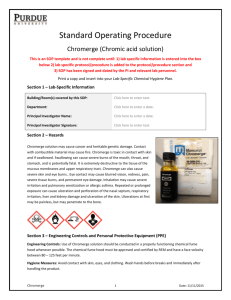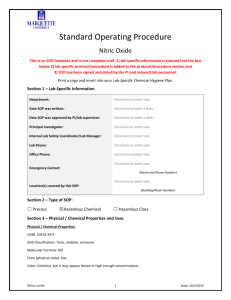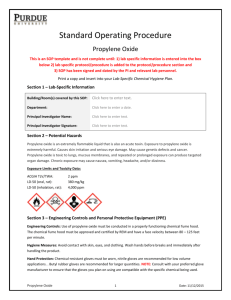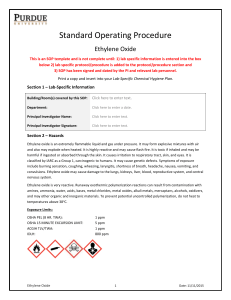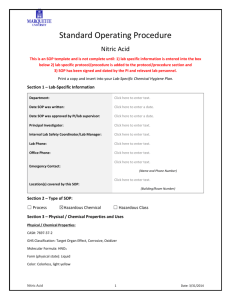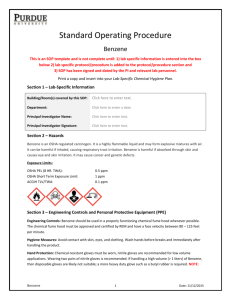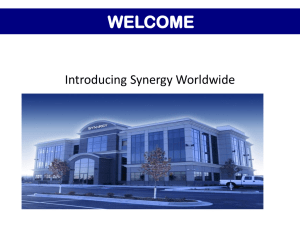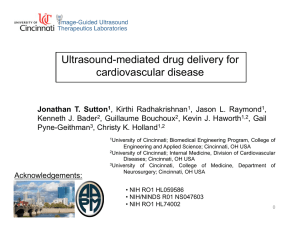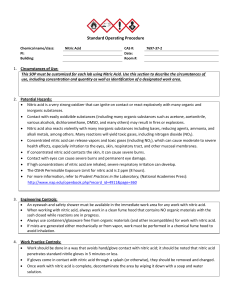Nitric Oxide
advertisement
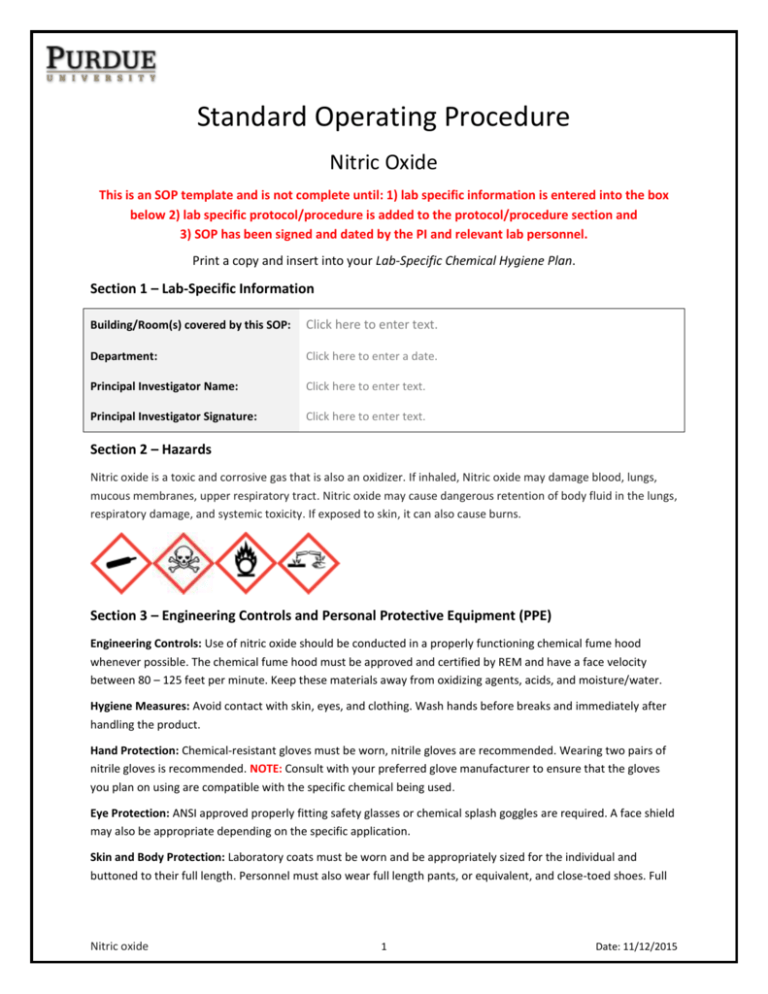
Standard Operating Procedure Nitric Oxide This is an SOP template and is not complete until: 1) lab specific information is entered into the box below 2) lab specific protocol/procedure is added to the protocol/procedure section and 3) SOP has been signed and dated by the PI and relevant lab personnel. Print a copy and insert into your Lab-Specific Chemical Hygiene Plan. Section 1 – Lab-Specific Information Building/Room(s) covered by this SOP: Click here to enter text. Department: Click here to enter a date. Principal Investigator Name: Click here to enter text. Principal Investigator Signature: Click here to enter text. Section 2 – Hazards Nitric oxide is a toxic and corrosive gas that is also an oxidizer. If inhaled, Nitric oxide may damage blood, lungs, mucous membranes, upper respiratory tract. Nitric oxide may cause dangerous retention of body fluid in the lungs, respiratory damage, and systemic toxicity. If exposed to skin, it can also cause burns. Section 3 – Engineering Controls and Personal Protective Equipment (PPE) Engineering Controls: Use of nitric oxide should be conducted in a properly functioning chemical fume hood whenever possible. The chemical fume hood must be approved and certified by REM and have a face velocity between 80 – 125 feet per minute. Keep these materials away from oxidizing agents, acids, and moisture/water. Hygiene Measures: Avoid contact with skin, eyes, and clothing. Wash hands before breaks and immediately after handling the product. Hand Protection: Chemical-resistant gloves must be worn, nitrile gloves are recommended. Wearing two pairs of nitrile gloves is recommended. NOTE: Consult with your preferred glove manufacturer to ensure that the gloves you plan on using are compatible with the specific chemical being used. Eye Protection: ANSI approved properly fitting safety glasses or chemical splash goggles are required. A face shield may also be appropriate depending on the specific application. Skin and Body Protection: Laboratory coats must be worn and be appropriately sized for the individual and buttoned to their full length. Personnel must also wear full length pants, or equivalent, and close-toed shoes. Full Nitric oxide 1 Date: 11/12/2015 length pants and close-toed shoes must be worn at all times by all individuals that are occupying the laboratory area. The area of skin between the shoe and ankle must not be exposed. Respiratory Protection: If nitric oxide is being used outside of a chemical fume hood, respiratory protection may be required. If this activity is necessary, contact REM (4-6371) so a respiratory protection analysis can be performed. Section 4 – Special Handling and Storage Requirements Keep containers tightly closed. Store in a cool, dry and well-ventilated area. Incompatible with the following materials: oxygen, combustible materials, powdered aluminum, boron, chlorine monoxide, chromium, fluorine, nitrogen trichloride, oxidizing agents, halogens, iron, sodium monoxide, magnesium, manganese, uranium, tungsten carbide. Contents under pressure Section 5 – Waste Disposal Procedures Store hazardous waste in closed containers that are properly labeled, and in a designated area (flammable cabinet is recommended) away from incompatible chemicals such as those above. Complete a Chemical Waste Pickup Request Form to arrange for disposal by REM; detailed instructions are provided at the following link: http://www.purdue.edu/ehps/rem/hmm/chemwaste.htm. Section 6 – Spill and Accident Procedures Immediately evacuate area and ensure others are aware of the spill. If there is an imminent threat of a fire, pull the nearest fire alarm station to evacuate the building and dial 911. If personnel have become exposed and need medical assistance, dial 911. If the spill is minor and does not pose a threat to personnel, contact REM at 49-40121 during normal business hours (Monday – Friday, 7 AM – 4 PM) for spill cleanup assistance (dial 911 if spill occurs after hours and assistance is needed). Section 7 – Protocol (Add lab specific Protocol/Procedure here) Click here to enter text. NOTE: Any deviation from this SOP requires approval from PI. Section 8 – Documentation of Training (signature of all users is required) Prior to conducting any work with nitric oxide, the Principal Investigator must ensure that all laboratory personnel receive training on the content of this SOP. I have read and understand the content of this SOP: Name Signature Date Click here to enter text. Click here to enter a date. Click here to enter text. Click here to enter a date. Nitric oxide 2 Date: 11/12/2015 Nitric oxide 3 Date: 11/12/2015
